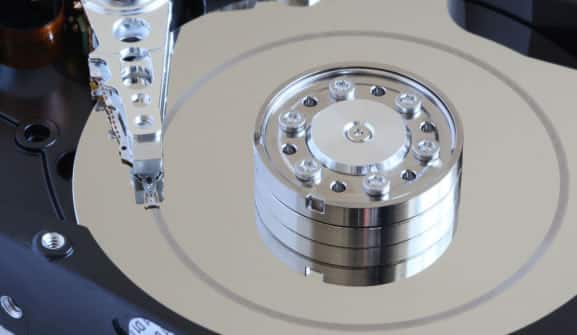What Is Data Recovery And How Does It Work?
We’ve all handled data loss, whether it was deleting a file or from the hard drive failure. You’ve probably wondered about data recovery does this function if you’ve ever experienced a loss of data? How effective will it be? How much does it cost? We attempted to seek out.
Data Loss and Data Recovery
Data loss can take many forms deletion, hard disk failure, software bugs, data corruption, hacking just a very simple power failure could cause you to lose data. And, obviously, there are more extreme instances, for example when there can be a drive retrieved out of a plane crash some data retrieval specialists can recover data from storage network that’s been almost completely destroyed.
If a little bit of data was in your own hard drive, solid state disk drive, USB stick, RAID, or additional storage media, you may have the ability to hire someone (or even buy some software) to perform data retrieval. Data retrieval is, simply, the repair and interrogate. Naturally, data recovery wont necessarily be potential a method can be damaged or corrupted to capture much of their data back.
But, data recovery technology has gotten acutely higher level; as an example, East Africa Recovery Experts, a Kenyan data recovery company, has been in a position to recover 99% of the information in a drive that had firmware encryption on it’s PCB.
How Does Data Recovery Work?
Below are some of the major types of data loss. The methods to be used to recover depend with the level of damage and how the data was lost.
Data Deletion
Interestingly, any document that is deleted actually stays on your own device before it is flashed beyond recovery. This means that if you act fast, you’ve got a pretty good likelihood of receiving the back file . In the case of file deletion, then you may use file retrieval softwares, that uses complex algorithms that look in pieces of info that is left on the hard drive in order to figure where the file was stored. You’re going to find the file back, if it guesses correctly again. Otherwise, you’re out of luck.
However, doing virtually anything in your desktop can lead to the file being uninstalled and probably lost forever. Even browsing the Internet may result in cache or cookies files being stored in that location, overwriting the info you are hoping to retrieve. And installing document retrieval applications can do the identical task. In case the file wasn’t overwritten, the chances of getting it back vary based upon the arrangement of your document system.
As an example, the Windows NTFS system retains record description information after the document has been deleted, which makes it relatively easy for file recovery applications to locate the file. Additional systems, however, like UTF and FAT, destroy extra information about the file if it is deleted, which makes it tougher to allow file-recovery calculations to guess that the place of the file on the disc drive.
File Corruption
When you’ve ever gotten you of those dreaded”corrupt drive” mistakes, then you know just how hard it might be. It’s still possible that data can be retrieved. If you join the drive into a different computer system, you may realize which the remainder of one’s data is fine, and that the system was corrupted. it’s only a question of copying everything to a different drive.
Another issue that could cause you to this stage is a corrupt partition, which may be possible to repair using the proper software. It should be easy to find every one of your files back if you can successfully fix the table again. If not, you still might be able to recover information from your table even though it depends greatly on the level of corruption to get your documents back.
Also if the files you are attempting to regain are corrupted, there is a possibility you’ll have the ability to receive usable parts of them back using recovery applications; provided that the computer program can get the document, it is going to attempt to regain it. There is always a possibility you’ll find a partition As you may be unable to utilize exactly what you get.
File System Format or Damage
Comparable to deleting a document, partitioning a file program destroys info in regards to the prior documents and arrangement of the disc, however, the number of information that is erased is dependent upon the system structure.
As an example, formatting using FAT results in the destruction of a lot of information and rewriting that part of this disk with zeroes, considerably reducing the probability that you’ll be able to recover your information. Some file systems, like NTFS, will have a higher likelihood of recovery if they’re uninstalled using the same file system, while some actually have a bigger opportunity if they are overwritten with the identical system — writing XFS over FAT makes it more probable for the FAT documents to be recovered.
In the example of file system damage, the amount of documents which may be recovered is dependent upon the area of the harm and what allocation data remains readily available to the retrieval program. If enough data is present for your retrieval applications to fix the file and correctly find preceding records, you ought to be able to recover a significant bit.
Physical Drive Damage
Recovering files which have been deleted or formatted is one thing — getting files off of a physically damaged hard drive is another. Coping with a damaged hard drive is better left to the professionals, even since it demands that the hard drive be taken apart.
Opening a hard drive is very difficult and best left for data recovery engineers who do it in a professional clean room. Cleanrooms are highly controlled environments that are free from contaminated air. Dust settling on a hard drive platter can cause the read/write head to crash and create scratches where data is stored. Static electricity can also damage the drive, so these rooms, this equipment used in them, and the clothing that technicians wear are anti-static.
If you take your drive to a data recovery expert, they will take a range of measures, from rebuilding sectors of the hard disk to making a disc image and performing their very best to fix the corrupt components utilizing complex software. The expense of the rebuilding, proprietary imaging technology, and upkeep of the clean rooms is that which may drive the price of professional data retrieval.
Solid State Drive Data Recovery
Solid state drives are getting increasingly more popular, particularly with the growth of ultrabooks. Evidently, as they haven’t been around so long, recovering data in the SSD is more challenging than it would be to recuperate from a classic hard disk. A range of the techniques may be utilized to recover.
However, recovering data from a physically damaged solid state drive is extremely expensive, as the technology is still new.
Data retrieval software and data recovery experts can do a wonderful job of getting your data back, but it’s time-consuming, and expensive. The ideal measure you can take to stop long-term data loss is by making plenty of copies! Utilize a cloud backup supplier, keep a backup drive and be sure you don’t get caught out with a power spike or an accidental formatting. And take action to prevent file corruption.



